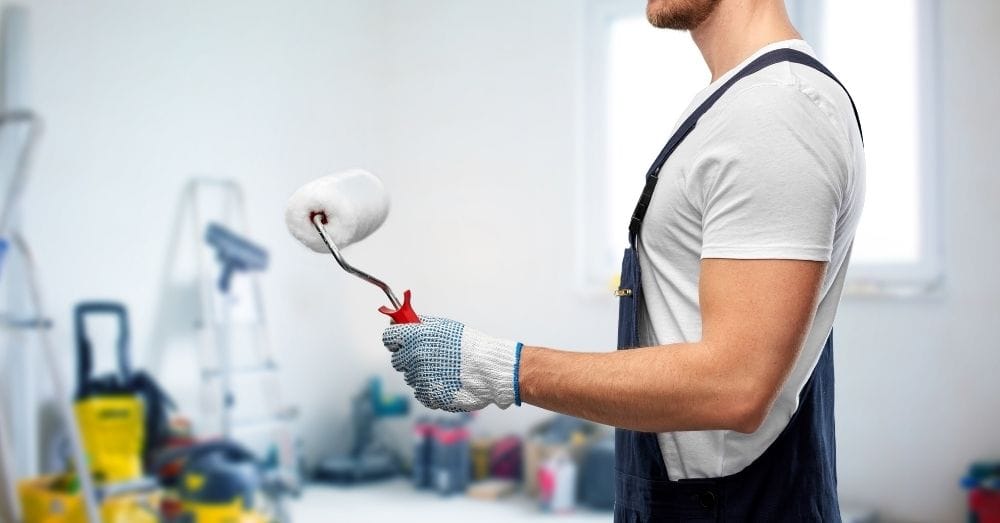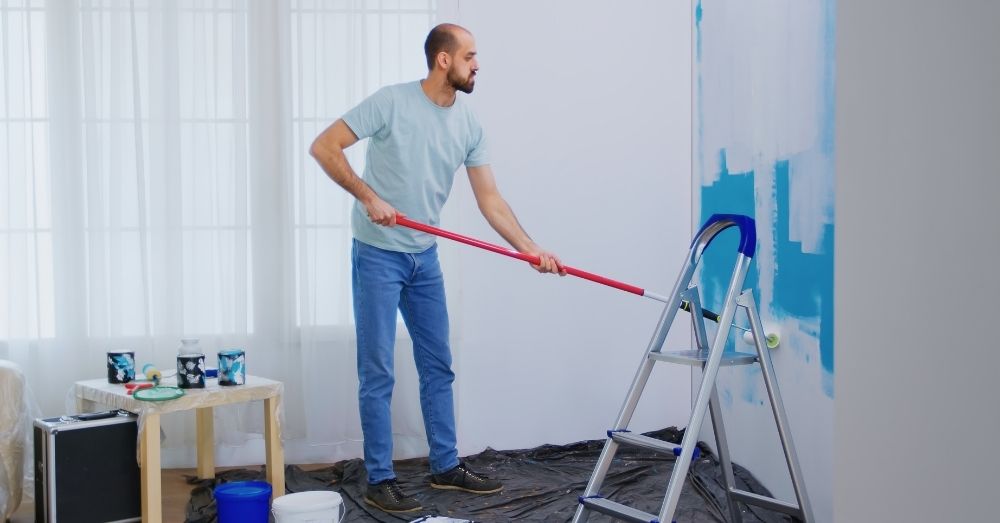
How Long Does It Take to Paint a Room
Key Takeaways
- Average timeline: Painting a standard bedroom takes 4–6 hours DIY—but professionals often finish in 2–3 hours.
- Room size matters: A 12×12 room usually takes 5–6 hours for DIY painters, while larger spaces like living rooms may stretch to 6–8 hours.
- Prep is everything: Cleaning, patching, taping, and priming often take more time than the actual room painting itself.
- Speed vs. quality: The fastest way to paint a room is efficiency—using extension poles, sprayers, and teamwork—not cutting corners.
- After painting safety: With low-VOC paints, most homeowners can safely sleep in a painted room after 24 hours; traditional paints may need 48–72 hours.
Table of Contents
Most homeowners are surprised to learn that painting a room usually takes 4–6 hours—but the true timeline depends on size, prep work, and whether you go DIY or hire professionals.

Why Room Painting Is More Than Just a Quick Project
Painting a room might sound like a simple weekend task, but the reality is that it’s more involved than just rolling color on the walls. From prepping surfaces to allowing for drying time, every step impacts how long the project will take. Skipping details often means uneven coverage or peeling paint later—something no homeowner in West Hartford wants to deal with.
By understanding the steps to painting a room and what affects timing, you can set realistic expectations and decide whether it’s worth tackling on your own or calling in the experts.
Step-by-Step Guide to Painting a Room
Step 1 | Gather the Right Supplies
Start with the basics: paint, rollers, brushes, painter’s tape, drop cloths, and a ladder. Having everything ready keeps you from running back to the store mid-project.
Step 2 | Prep the Room Thoroughly
This is where most of the time is spent. Move or cover furniture, clean the walls, patch holes, and tape trim. While it feels time-consuming, proper prep makes painting faster and the finish cleaner.
Step 3 | Prime Surfaces (If Needed)
If you’re covering dark walls, stains, or new drywall, primer is essential. It cuts down on the number of paint coats and ensures lasting adhesion.
Step 4 | Apply Paint Strategically
Professionals “cut in” edges with a brush before rolling the larger wall areas. Use long, even strokes and work top to bottom for a uniform finish. Two coats are usually needed for full coverage.
Step 5 | Final Touches and Cleanup
Remove painter’s tape while the paint is still tacky, reinstall fixtures, and ventilate the room. Cleanup makes your freshly painted space immediately livable.

Fastest Way to Paint a Room Without Sacrificing Quality
The fastest way to paint a room is all about efficiency, not shortcuts. Use an extension pole to speed up rolling, and consider a sprayer for large walls if you’re experienced.
Recent advancements in paint technology are also making projects faster. For example, new additives extend the “open time” in low-VOC latex paints, which helps homeowners apply smoother coats with less rework. Meanwhile, high-performance catalysts are being tested to speed up drying even while meeting strict low-VOC regulations.
Prepping the day before saves hours. Working with a partner—one cutting in, the other rolling—can nearly cut painting time in half.
West Hartford House Painting Experts specialize in combining speed with quality, completing most rooms in just a few hours while delivering flawless results.
Factors That Affect Painting Time
When asking “how long does it take to paint a room,” the answer depends on several key factors:
- Room size and ceiling height – A 12×12 bedroom is quicker to paint than a vaulted living room with tall ceilings. Larger surface areas naturally require more time.
- Wall condition – Cracks, holes, or stains extend the process since patching, sanding, and priming are often needed before painting.
- Number of coats required – Light paint over dark walls usually needs multiple coats, while neutral colors and quality paints may cut down on layers.
- Drying time between coats – Quick-dry and low-VOC paints reduce downtime, whereas traditional paints need longer breaks between applications.
- DIY vs. professionals – A beginner may take 6–8 hours in a room, while experienced painters often complete the same job in 2–3 hours using efficient tools and techniques.
Time Breakdown by Room Type (DIY Estimates)
- Small bedroom (10×10): 3–4 hours.
- Standard bedroom (12×12): 5–6 hours.
- Living room: 6–8 hours, especially with tall ceilings.
- Kitchen/Bathroom: 4–6 hours due to cabinets and fixtures.
Tips for Accurate Estimation Before You Start
- Measure carefully: Square footage determines how much paint you’ll need.
- Buy the right amount: One gallon covers roughly 350–400 sq. ft.
- Plan for prep time: Taping, patching, and moving furniture can take longer than painting.
- Be realistic: A full room redo rarely fits into a 2-hour window unless handled by pros.
Frequently Asked Questions | Room Painting Time
Can you paint your room in one day?
Yes. With proper planning and prep work completed in advance, most standard bedrooms can be painted in a single day. The key is efficiency—having supplies ready, walls prepped, and using quick-dry paints when possible. Professional painters can almost always complete a room within the same day thanks to their tools, techniques, and ability to work in teams.
How long does it realistically take to paint a room?
For DIY painters, expect around 4–6 hours to complete a bedroom-sized room, including setup and cleanup. Larger spaces like living rooms, or rooms that require extra prep work, can stretch into a full day or even the weekend. Professionals often finish faster, cutting the timeline nearly in half without sacrificing quality.
How long should it take to paint a 12x12 room?
A 12×12 room is a common benchmark. For DIY painters, the average is 5–6 hours, accounting for prep, two coats of paint, and drying time. With a professional crew, the same room can typically be completed in 3–4 hours with clean lines and an even finish.
Can you paint a room in 2 hours?
Two hours is ambitious and only realistic for very small rooms with minimal prep and a single coat of paint. While homeowners may struggle to hit this timeframe, professionals using sprayers and working in teams can sometimes finish compact spaces this quickly. Just keep in mind that rushing often compromises coverage and finish quality.
How soon can you sleep in a room after it's been painted?
It depends on the type of paint. With low-VOC or zero-VOC paints and proper ventilation, you can safely sleep in the room within 24 hours. For standard paints, it’s best to wait 48–72 hours to allow fumes to dissipate fully and ensure the air quality is safe, especially for children or sensitive individuals.

Why Connecticut Homeowners Trust West Hartford House Painting Experts
Homeowners in West Hartford and across Connecticut rely on us for one reason: results. We’ve streamlined the process to deliver speed, quality, and lasting durability. From bedrooms to whole-home projects, our team ensures clean lines, even coverage, and a timeline that works with your schedule—not against it.
Get Your Room Painted Right the First Time
Painting your room doesn’t have to turn into a drawn-out project. By knowing the average timelines and following the right steps, you can set realistic expectations—and decide when it’s best to call in the professionals.
For homeowners in West Hartford and nearby Connecticut communities like Farmington, Bloomfield, and Avon, the fastest way to achieve a flawless, lasting finish is with a trusted local team.
Save yourself the stress and enjoy beautifully painted walls sooner. Contact West Hartford House Painting Experts today for a free estimate and transform your home with precision and speed.
